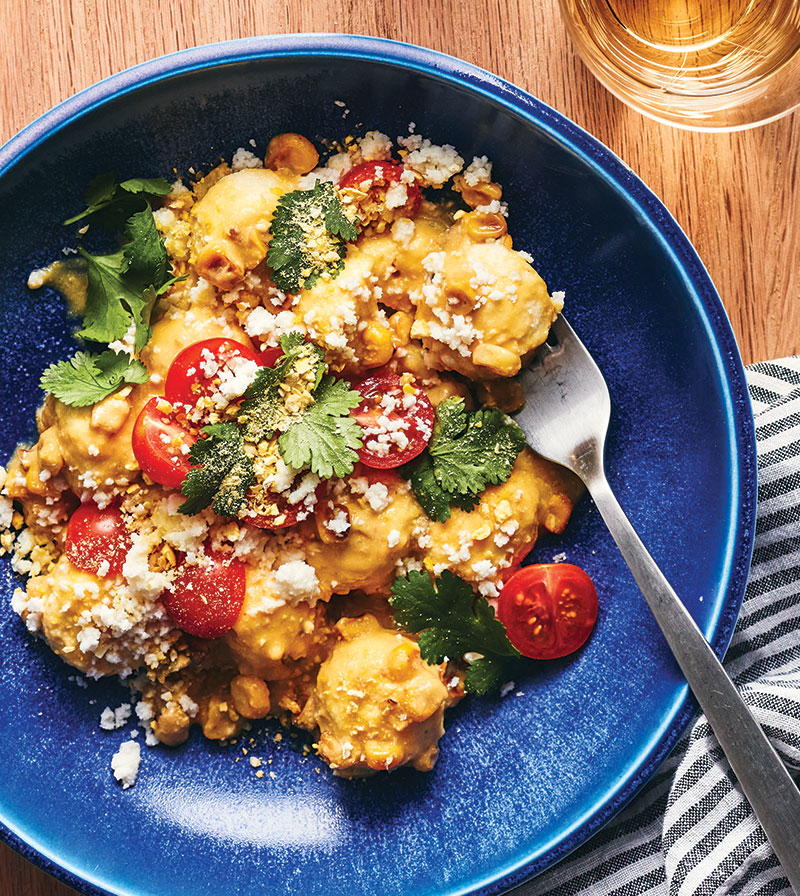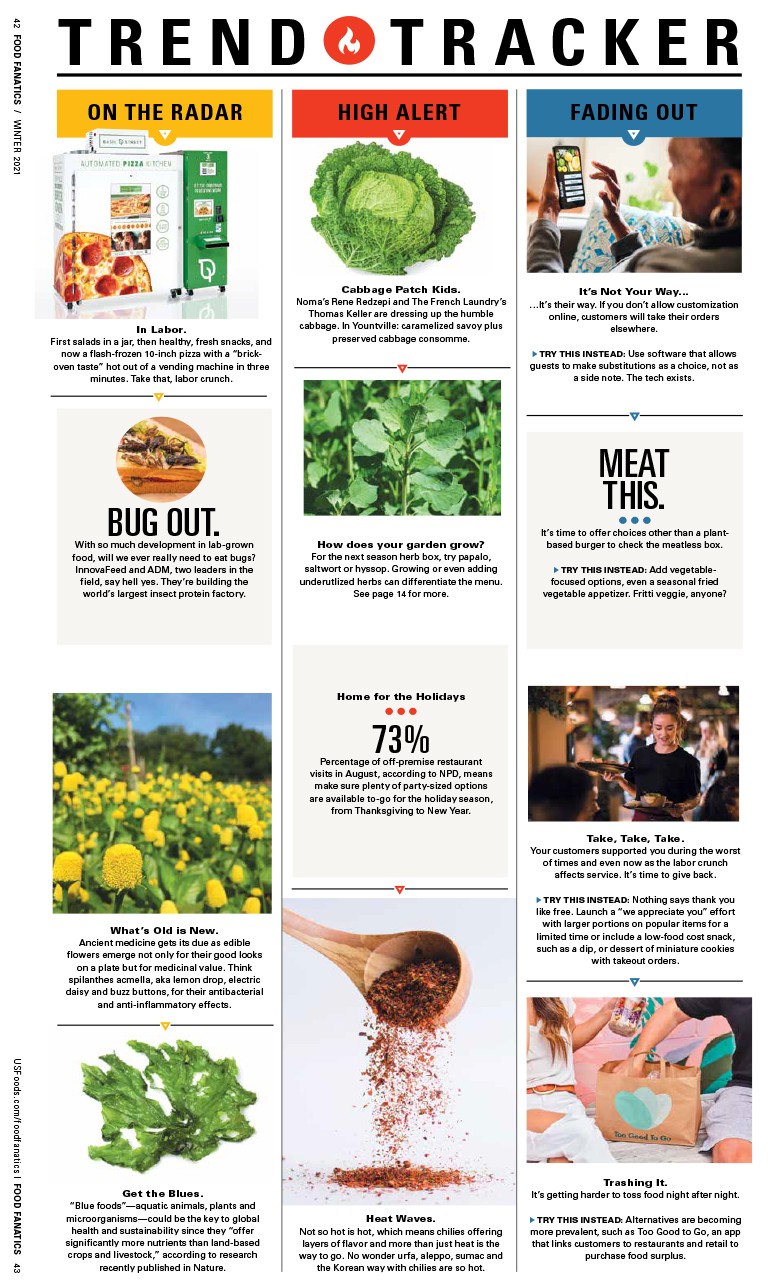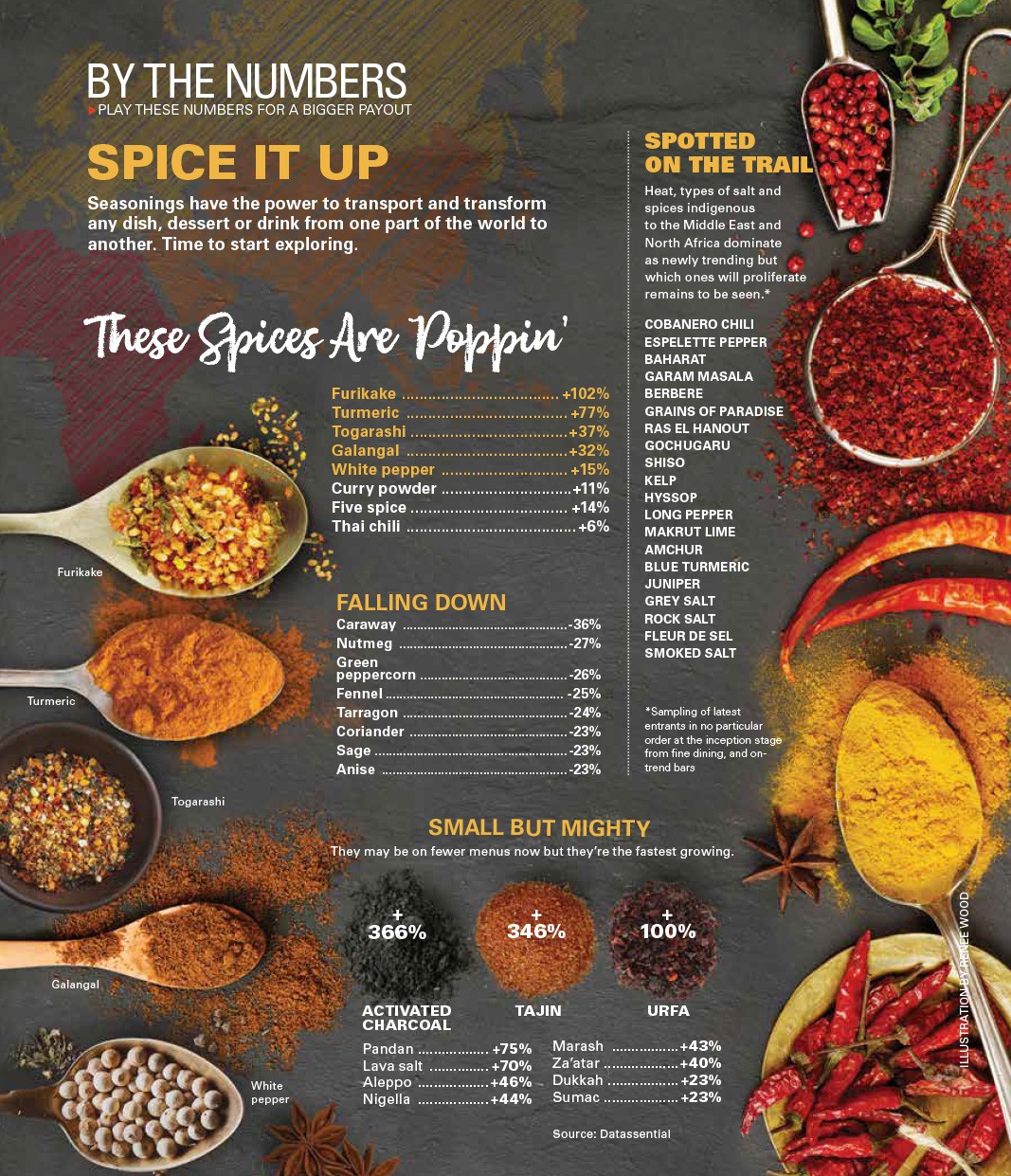And…We’re Back!
Favorites, tighter menus and the buzz of indoor dining fuel the new normal
 Over the past year of the pandemic, restaurants have been pivoting at whiplash speed, stitching together a patchwork of revenue-generating ways to survive COVID-19’s restrictions, from revised menus for off-premise dining and dinner kits to online booze sales and pantry items.
Over the past year of the pandemic, restaurants have been pivoting at whiplash speed, stitching together a patchwork of revenue-generating ways to survive COVID-19’s restrictions, from revised menus for off-premise dining and dinner kits to online booze sales and pantry items.
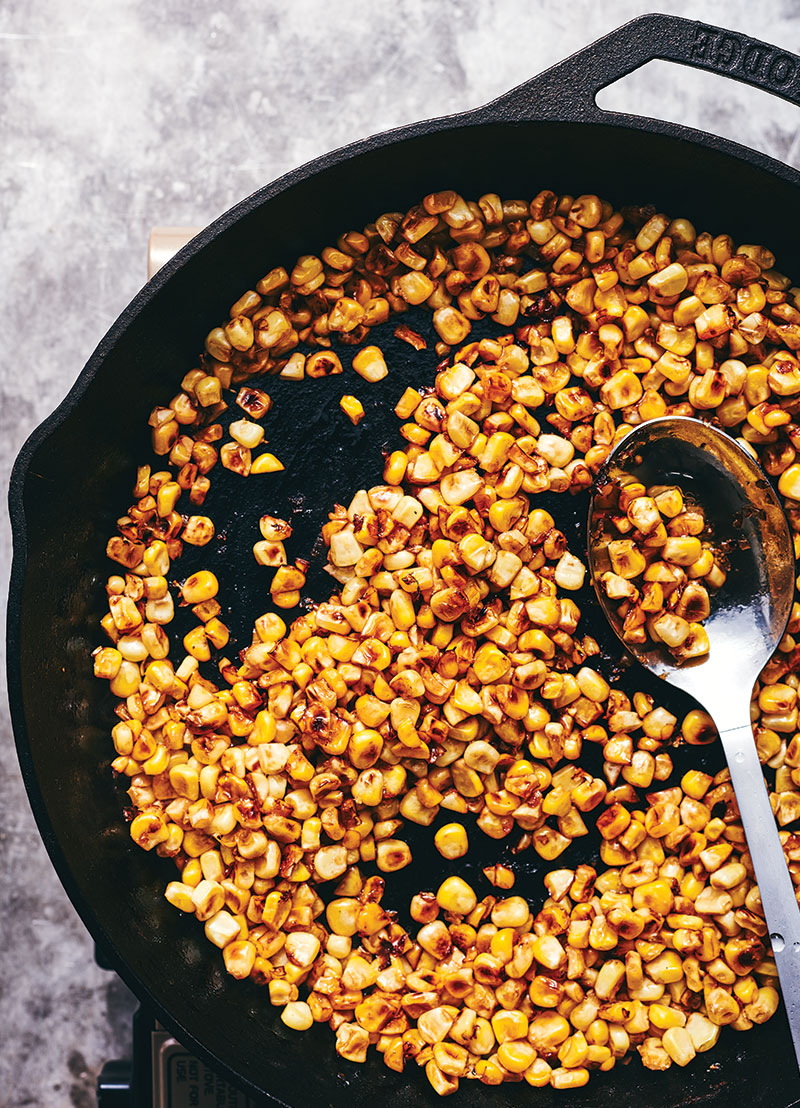
With the country all but vaccinated, the pall is lifting, and chefs are eagerly returning to normalcy – serving a la minute dishes without concern for travel time, cooking shareable meals, bringing back signatures that didn’t fare well reheated and recommitting to local farmers who have supported them during the public health crisis. For their part, customers are desperate for that cocoon of hospitality after months of cooking, serving and cleaning up after their families at home, industry experts say. The relationship couldn’t be more symbiotic, mutually beneficial.
“Consumers crave contact and that sense of being taken care of and the simple pleasure of going into a place to sit down and stay a while, not rush to eat outside or at home,” says Nick Mautone, a Seattle-based restaurant consultant and a former managing partner at Gramercy Tavern in New York City.
“We had to reconstruct our menu for food to-go that could be taken home and reheated, so I am excited to get back to dishes that taste best when served right away,” Nawab says. He’s thinking of comforting dishes that speaks summer, such as queso fresco gnudi with peak-of-the-season grilled corn esquites, calamari a la plancha in Mojo de Ajo with wilted greens and blistered tomatoes and shareable items that had to be removed from his menu, like his housemade 48-hour fermented roti, topped with heirloom tomatoes and serrano crema.
Recipes from this article:
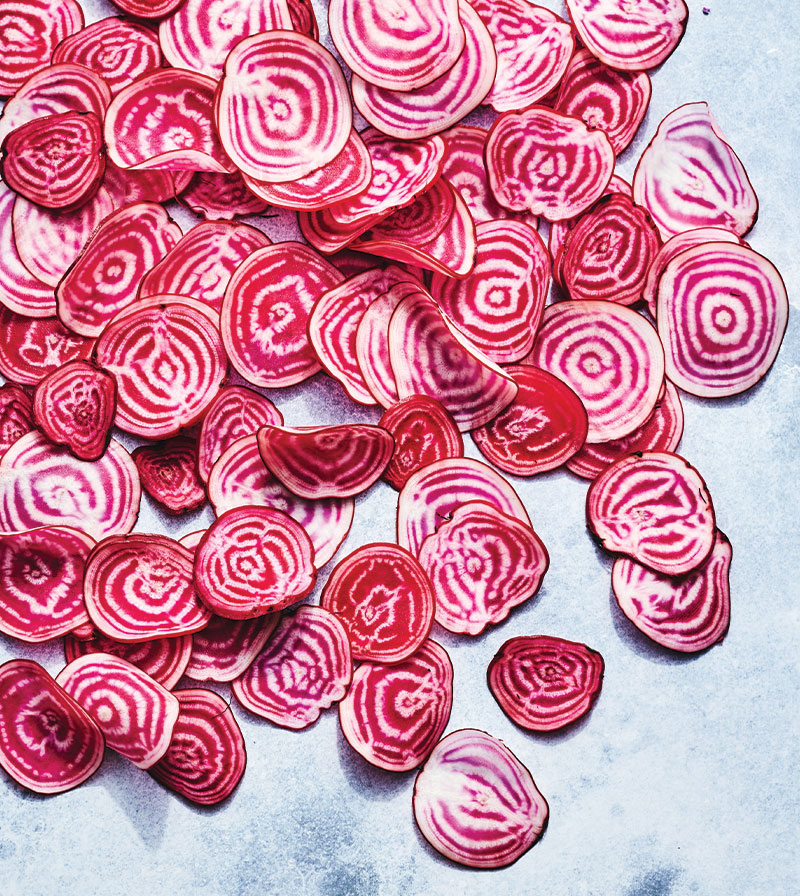
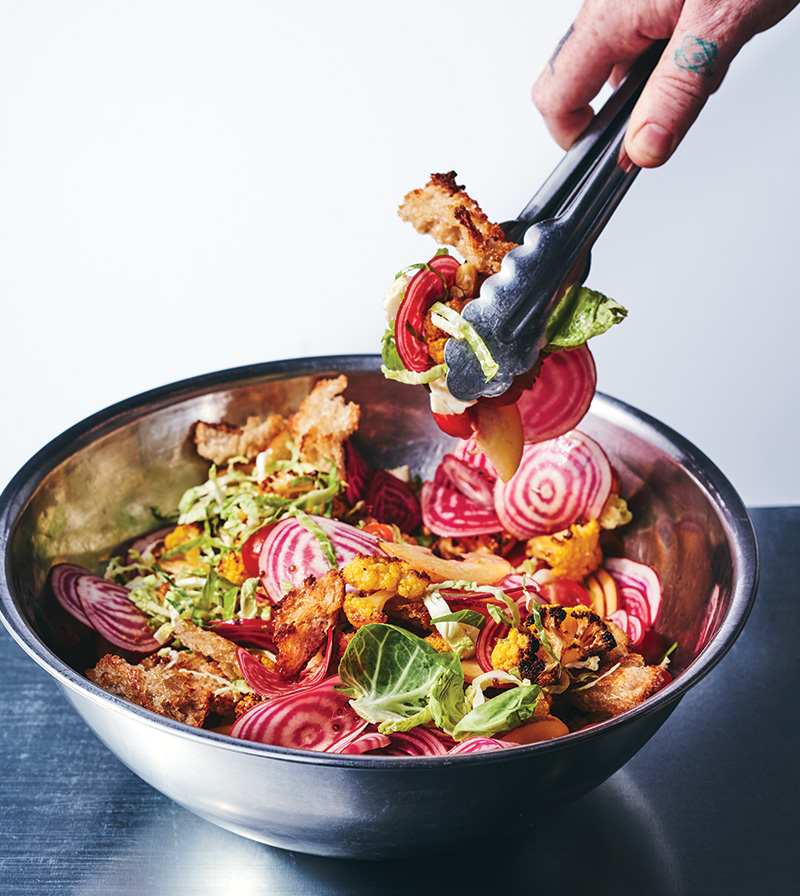
Serving Wow at the Table
A return to festive shareable feasts is on the mind of Ari Bokovza, executive chef at the Middle Eastern restaurant Dagon on New York City’s Upper West Side. “I am looking forward to getting back to full-table participation and presenting food tableside,” he said. “Dishes like whole fish, whole roasted chicken and a leg of lamb.”
Bokovza says the pandemic has been particularly challenging for Dagon, a Middle Eastern restaurant built on a menu made for communal eating that adjusted to single servings and less contact among customers dining together (pita was served with a knife versus passing and tearing with one’s hands). “I can’t wait to get back to the energy of a dining experience that is inclusive and where everyone can be invited to participate,” he says.
“ ... EATING, DRINKING AND SOCIALIZING IS IN OUR DNA SO I’M HOPING FOR A RESTAURANT RENAISSANCE ...”
—— Andrew Ridge of the NYC Hospitality AllianceConsultants watching the industry say they expect to see a strong consumer demand for shareable, communal food once the pandemic is in the rear view mirror. “What people really miss are shared appetizers, passing platters from one to another and large format dishes like pans of paella,” Mautone says. “There is a real need for that imbibing and sharing mentality that you (couldn’t) do with all the menu modifications and health mitigations and sanitary conditions. Communal sharing of foods will be one of the first things that comes back.”
Break Out the Favorites
For a restaurant like Animal in Los Angeles, which has been operating as a grocery store since the pandemic hit, getting back to a “real” restaurant setting serving a roster of signature dishes is very appealing. “I want to do the OG Animal dishes that I hold close to my heart and that are the foundation of my relationship to cooking,” said Animal’s partner and co-chef Jon Shook.
“Dishes like foie gras biscuits and gravy, hamachi tostada, chicken liver toast, balsamic barbecue ribs and rabbit larb. For those of us that have had to convert our restaurants to survive the pandemic on a drop of a hat, it will be rewarding to get back to the nostalgia of those classic dishes. It’s like putting on an old album that just brings you back.”
In regard to cocktails, Shook says he expects to see higher beverage bills in a post-pandemic summer. “On the drinking side, people want to be out visiting with friends and more of a Christmas-in-July kind of vibe. What people are missing is that festive interaction.”
Two Restaurateurs, Same Excitement
“You build a restaurant and create an environment for guests to come and be taken care of. I can’t wait until we can get people inside our dining room again, and we can hear that noise of the restaurant and feel that buzz.”
Jon Shook, chef/owner of Animal and other Los Angeles restaurants
“It used to be that we’d get a call from a regular when we were booked up and we’d be able to fit them in, but with the indoor dining caps, it would be illegal to do so. We are excited to be able to welcome our regulars (especially for birthdays and celebrations), and give them their usual table where they are used to celebrating with us.”
–Trey Smith, chef/owner of Saint Germaine in New Orleans
Smaller Menus, Bigger Payout
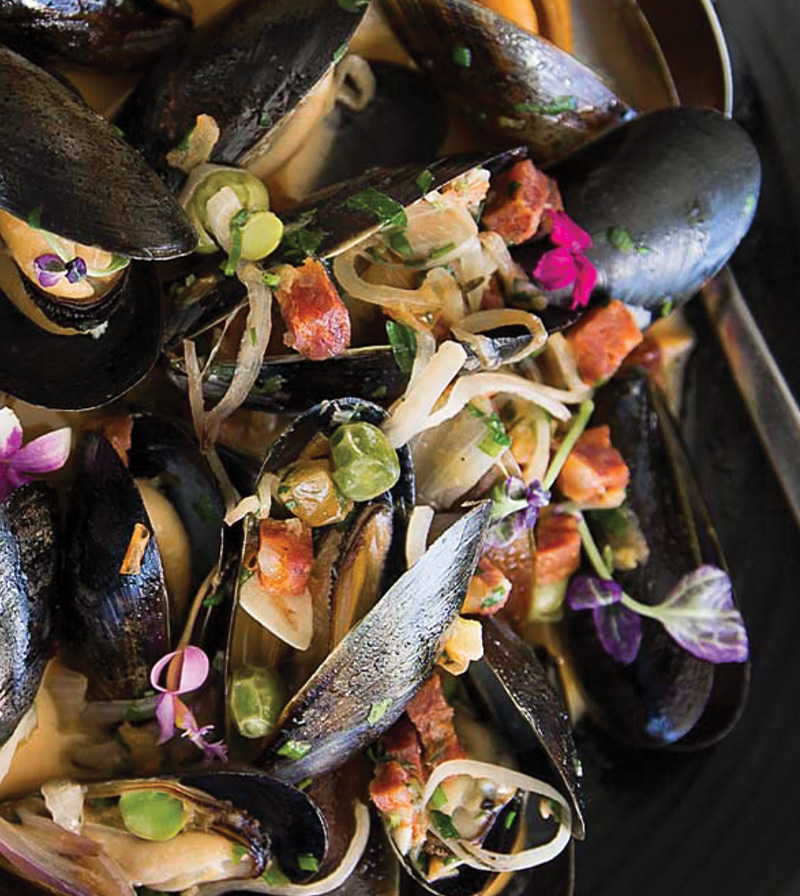 But Shook says the Animal menu, which was topping out at 35 to 40 dishes, will be edited down. “We could never do full-menu range,” he says. “It’s just too expensive with labor.”
But Shook says the Animal menu, which was topping out at 35 to 40 dishes, will be edited down. “We could never do full-menu range,” he says. “It’s just too expensive with labor.”
That said, the restaurant’s five top-selling dishes usually represent 80% of overall gross sales. “So you can pull the top five and run those, and add a few others that will keep the diner excited.”
Mautone agrees that menus will need to be more streamlined post-pandemic – edited to offer fewer options with more ingredient cross-utilization to reduce cost, waste and to turn over inventory quicker. “Now is the time to focus on what you do really well and what you can make money on, and keep inventory tight and sales moving in the right direction,” he advises. “Keep it brief, and maybe you change the menu more frequently than you used to.”
Eating Out is an Occasion
At Geordie’s Restaurant at the Wrigley Mansion in Phoenix, chef de cuisine Ashley Goddard has also noticed that her guests seem primed to celebrate, if only because they are out to dinner. Goddard says diners are yearning for celebratory foods and meals. “I honestly feel it’s such a big thing for people to be able to go out to eat now, and they want those big celebratory ingredients like truffles and caviar,” she said. “We sell quite a bit of it.”
But it’s not all about the Champagne and caviar for Goddard. She says the pandemic has strengthened her commitment to buying from local farmers. “This pandemic has changed my mindset,” she said.
“Supporting local farmers used to be important, but now I see it as critical because so many small businesses have closed.”
A summer vegetable panzanella salad checks the local farm box, while the salad says communal. Goddard is also playing with a lighter white vermouth-based sauce for a sous vide rabbit saddle, also from a nearby farmer.
That sense of celebration will certainly be a welcome antidote to the fear and grief of the past year, one that promises not only to buoy a battered restaurant economy, but also connections between friends, families and strangers neglected and frayed over the past year of social isolation.
“At the end of the day, eating and drinking and socializing is in our human DNA,” said Andrew Rigie, executive director of the NYC Hospitality Alliance, who has been advocating for the restaurant industry ever since the pandemic hit. “So I’m hoping for a restaurant renaissance – a new Roaring Twenties.”
10-Second Synopsis
What your summer should look like:
- • Dishes that couldn’t sustain travel
- • Items best a la minute
- • Foods that say celebration
- • Smaller menus, streamlined for more cross-utilization
- • Diner interest in luxe ingredients
- • Bigger bar and wine tabs, especially for larger parties
- • Christmas-in-July vibe
